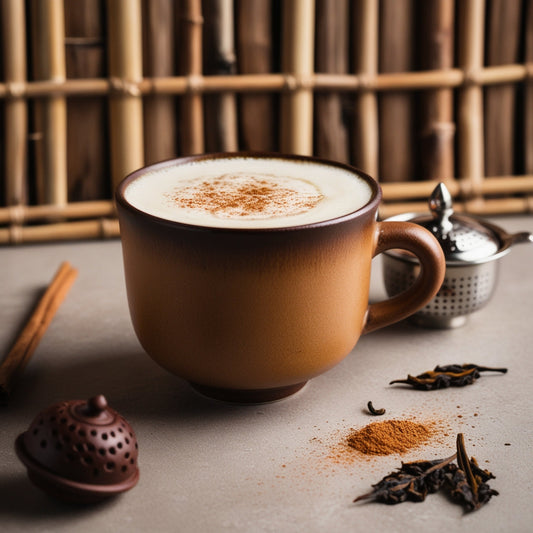Introduction
Imagine savouring a tea that not only improves with age but also transforms into unique flavours. Welcome to the fascinating world of Pu-erh tea. This remarkable tea from the Yunnan province of China, offering a treasure of unique tastes and health benefits that tea connoisseurs around the globe. Let's discuss how to make Pu-erh tea, explore the intricacies of its fermentation process, and provide essential tips on storing it to maximize its longevity.
Whether you are a seasoned tea enthusiast or a curious beginner, this guide will enrich your appreciation for this exceptional brew.
Table of Content
- Introduction
- How Pu-erh tea is made?
- How Pu-erh tea is fermented?
- How to store Pu-erh tea?
- How long does Pu-erh tea last?
- Conclusion
How Pu-erh Tea is made?

How Pu-erh Tea is fermented?
Fermentation is the defining step in the production of Pu-erh tea. There are two main types of Pu-erh based on their fermentation process. They are Sheng Pu-erh (Raw) and Shou Pu-erh (Ripe).
Natural Fermentation
Sheng Pu-erh (Raw) undergoes natural fermentation through a slow aging process. Farmers harvest tea leaves and wither them, then pan-fire them to stop oxidation. They press the leaves into cakes and store them in a controlled environment. Over years or decades, natural microbial activity gradually transforms the tea's flavour and character. This method preserves the tea's original qualities while allowing it to develop complex, earthy notes over time.
Accelerated fermentation
How to Store Pu-erh Tea?
To preserve Pu-erh , store it in a cool, dry place away from direct sunlight. Use breathable containers like clay jars, bamboo wrappers, or paper boxes to allow airflow. Maintain a stable temperature and avoid rapid changes to protect the tea's integrity. Ensure moderate humidity, around 60-70%, to prevent mold while keeping the tea from becoming too dry. Proper storage will enhance the aging process and improve the tea's flavour over time.
Air Flow
Proper airflow regulates the oxygen content surrounding the tea and helps remove odours from the aging tea. Stagnant, dank air can cause the tea to develop stale, unpleasant smells. Wrapping tea in plastic will eventually stop the aging process.
Odours
Tea stored near strong odours will absorb them, sometimes permanently. While airing out Pu-erh can reduce these odours, it often doesn't eliminate them completely.
Humidity
Higher humidity levels accelerate the aging process of tea. However, liquid water on the tea can promote mold growth or negatively impact its flavour. A humidity range of 60–85% is recommended, though there is on-going debate about whether high fluctuations in humidity affect tea quality negatively.
Sunlight
Exposure to sunlight can cause tea to dry out prematurely and become bitter.
Temperature
Keep teas away from high heat to avoid the development of undesirable flavors. However, aging slows significantly at low temperatures. There is some debate about whether large temperature fluctuations adversely affect tea quality.

How Long Does Pu-erh Tea Last?
Pu-erh tea has impressive aging potential, with its flavour and value often improving over decades. Proper storage is crucial to maximize its longevity and quality. Store Pu-erh in a cool, dry place, maintaining a stable temperature and moderate humidity to promote optimal aging. Use breathable containers like clay jars or bamboo wrappers to allow airflow and prevent mold growth. By following these tips, you can ensure your Pu-erh develops complex, rich flavours over time, enhancing its shelf life and enjoyment.
Conclusion
Pu-erh tea's rich history, complex flavours, and remarkable aging potential make it a truly exceptional brew. By understanding how Pu-erh tea is made, its unique fermentation processes, and the best storage practices, one can fully appreciate and enjoy its evolving character over time. Whether you're new to Pu-erh or a long-time enthusiast, we encourage you to explore different varieties and experiment with aging your own collection.
Start your journey with Pu-erh today to discover a curated selection of high-quality Sheng and Shou Pu-erh. Enhance your tea experience and join a community of connoisseurs who treasure this timeless beverage.






